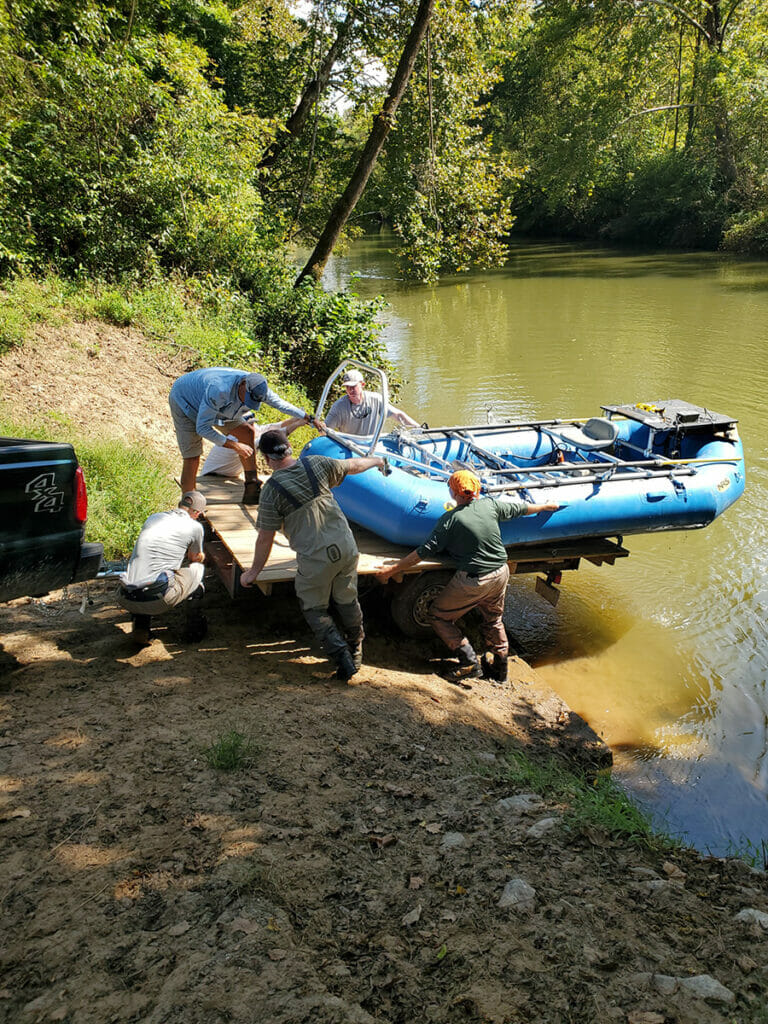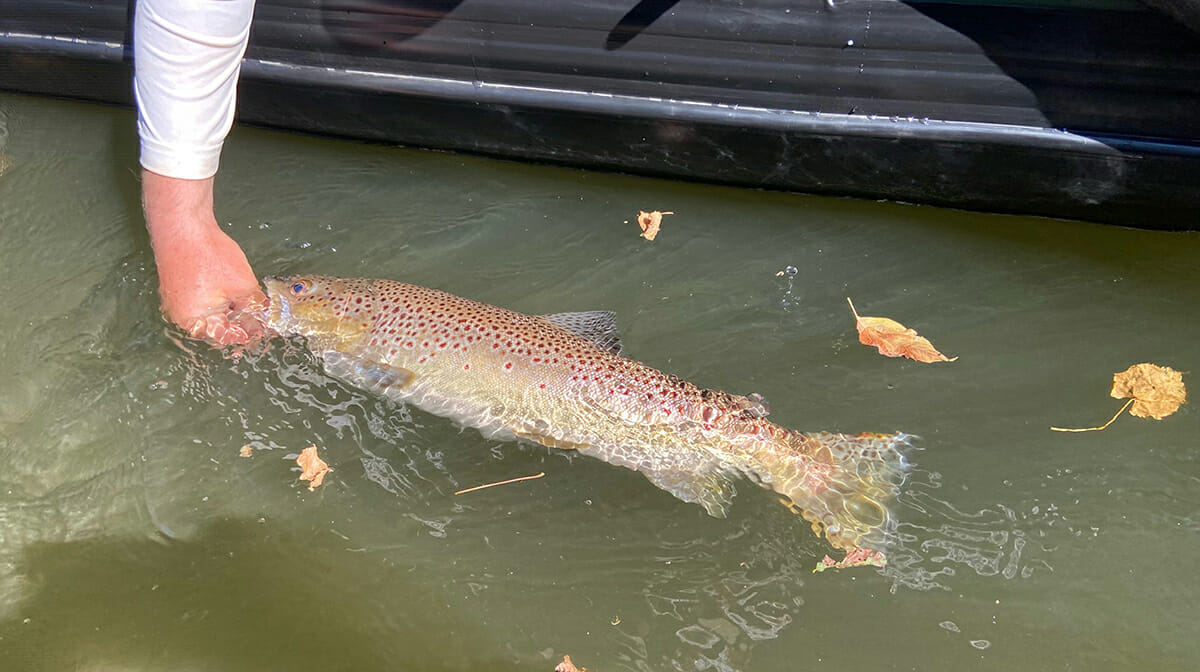To catch the biggest fish, sometimes you just need to be in the current
MARTINSVILLE, Va. — “Right! Right!”
Hunter Hatcher was yelling as he furiously pulled on the raft’s oars. Turning, I saw the reason for his exuberance: a brown trout.
A. Very. Large. Brown. Trout.
OK. Maybe not very large by Tierra del Fuego standards. But for this Virginia stream, it was a good one. Twenty inches-plus for sure.
I turned and reached for the fish with the long net, the distance between the fish and the raft increasing as we rolled through the riffle. Finally, with one last reach, I got the fish into the net.
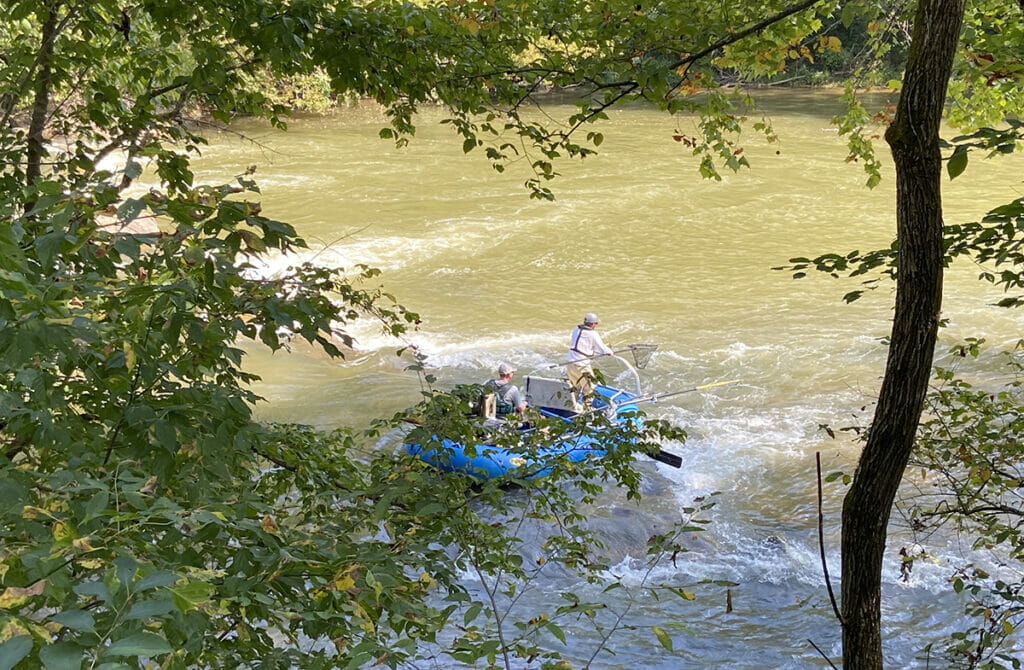
There would be no celebration or pictures, at least not yet. The hefty brown went into a water-filled cooler and Hatcher and I went back to scanning the river for more.
We were on the Smith River, a tailwater near Martinsville, Va., not too far from the North Carolina border. We were fishing, but it was a special kind of fishing. I’d been invited to help with an electrofishing trip organized by George Palmer, the Virginia Division of Wildlife Resources fisheries biologist who oversees management of the Smith’s fishery.
This is a stream with a long and sometimes complicated history, and one that has drawn a strong commitment from volunteers from the local Trout Unlimited chapter, which is named for the river.
For decades, TU volunteers have been helping the DWR with fish sampling efforts that have been indispensable in shaping management decisions and approaches for the fishery. The collaborative effort is responsible for a data set that is likely among the most robust and complete for any river in the state.
I first tagged along on one of those electrofishing days on a pleasant early fall day more than 20 years ago.
It was a massive effort.
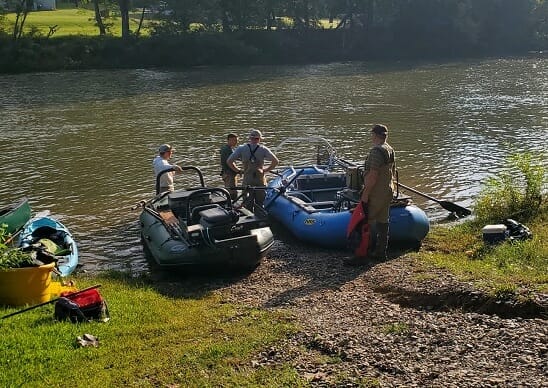
With flows reduced to a minimum — less than 100 cubic feet per second released from Philpott Dam — several DWR biologists and techs spread out across the river with backpack electrofishing gear. Other techs and TU volunteers handled nets to scoop up trout that were temporarily stunned by the electrical current. Behind them yet more volunteers piloted a makeshift barge with a water-filled cooler.
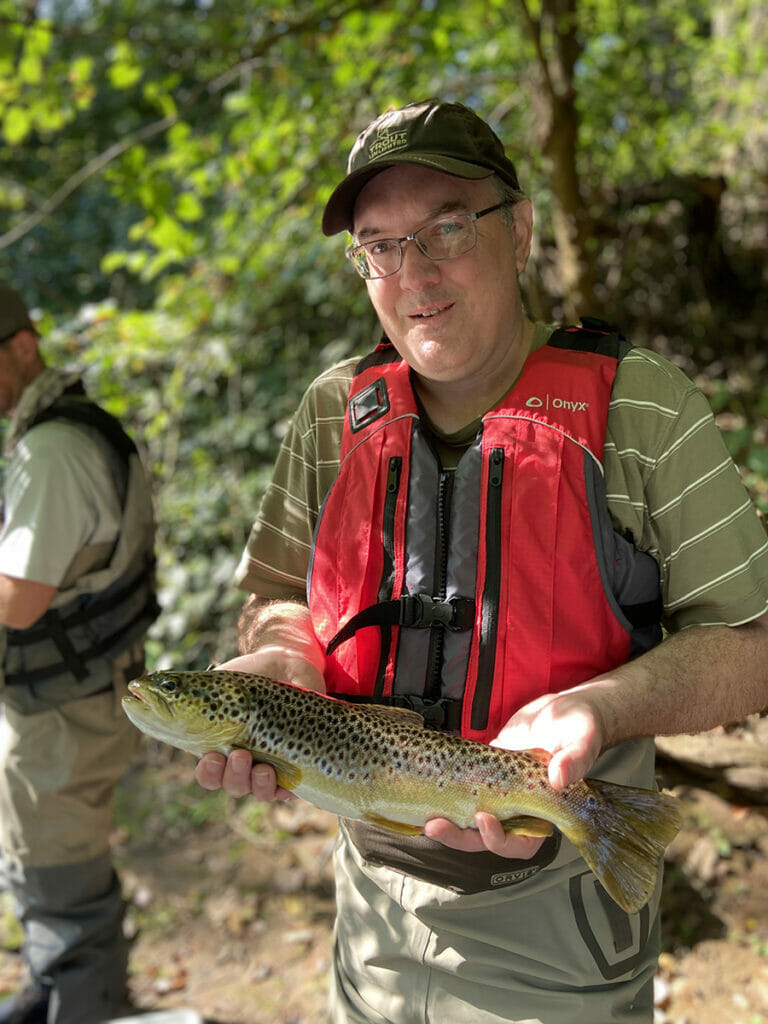
Fish went from nets to buckets to the cooler. Eventually, the crew would break from sampling to measure fish.
The labor-intensive effort helped confirm over the years that the river had a great population of wild brown trout, but that the fish had limited growth potential, a result that most suspected was due to stress from flow extremes from the hydro operation at the dam. (Flows have been much more consistent in recent years because the hydro operation is currently not in use due to damage from a mudslide.)
Recently, the DWR has expanded its sampling efforts to the lower end of trout water. The river is larger there, so wading and using backpack shockers is not practical or effective. The agency’s acquisition of an electrofishing-ready raft opened the lower river to study.
Those first surveys on the lower river confirmed what many local anglers already knew. There weren’t lots of trout in the section, but they averaged larger than the fish upstream because the “warmer” water supports a much better, more diverse forage base.
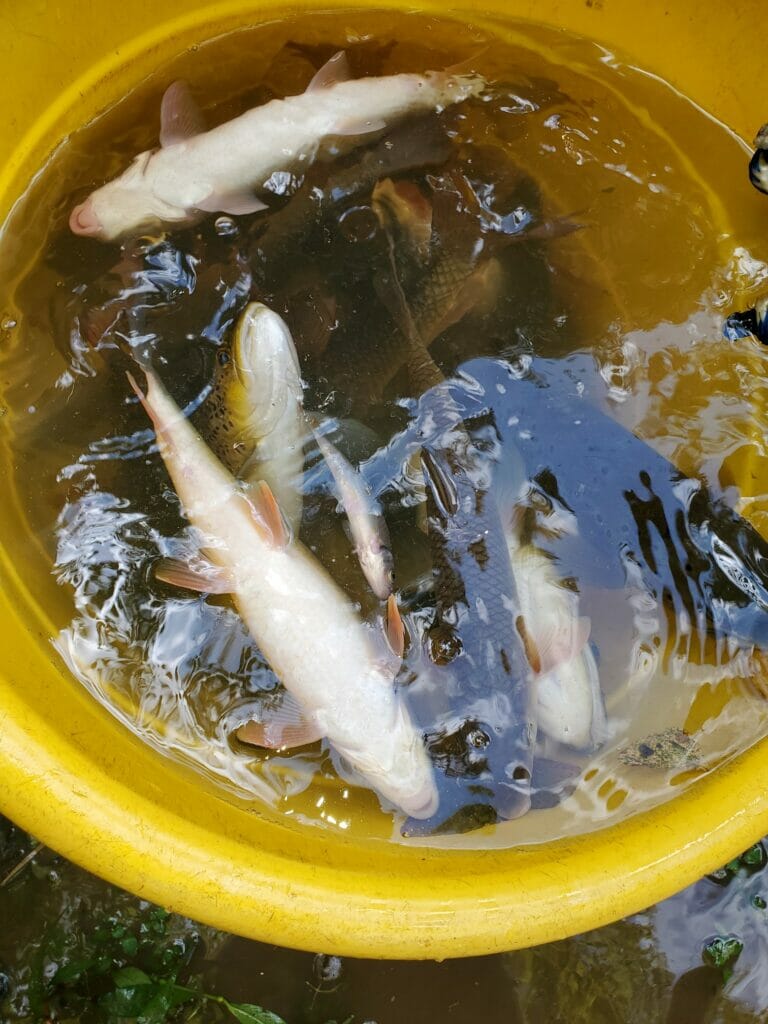
What followed were several years of relatively intense management to try to improve the fishery, including experimental stocking of fingerling brown trout and even moving some fish from the overpopulated stretches upstream into the lower water. (Fish can naturally migrate from upstream, but a small hydro dam in Martinsville blocks upstream passage.)
On that recent pleasant September day, the DWR team and several volunteers met at the put-in below that dam, launching the shocking raft, along with a second support raft (brought by volunteer Alex Wise), and a canoe and kayak for other members of the team.
Shocking runs were relatively brief, lasting 10 to 14 minutes. The weather wasn’t too warm, but Palmer didn’t want to hold trout in the water-filled cooler any longer than necessary.
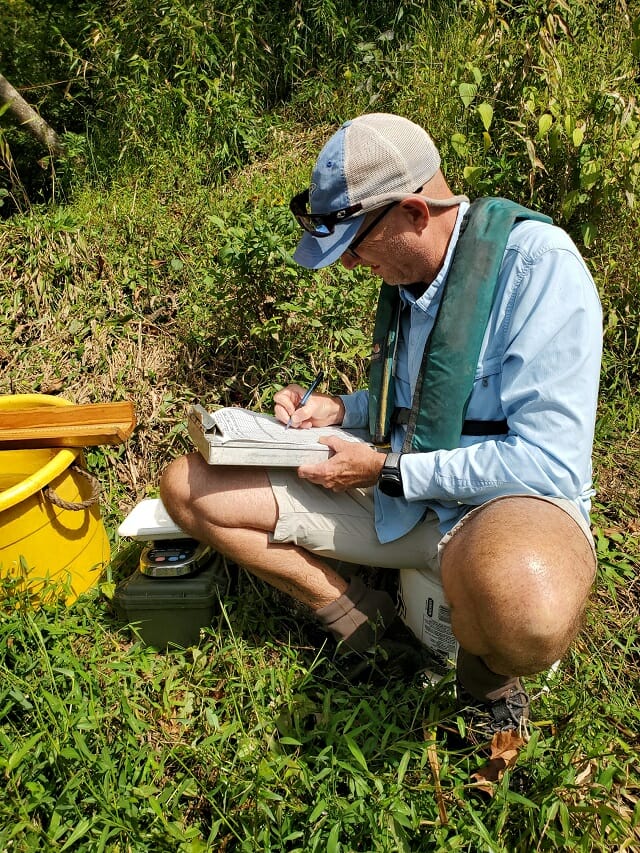
When the cooler was full, the raft crew would look for a suitable place to pull over. Fish would be transferred to a second tub filled with fresh water from the river, with a few drops of clove oil added to help calm the fish.
The shocking crew would then head downstream as the rest of the team worked up the fish. Trout were measured for length and weight. All other fish were measured for length only.
I’d been on the shocking crew on this section most recently three years ago and the results were disappointing. The previous summer had been hot and dry, and water temperatures in the stretch below the Martinsville dam frequently topped 70 degrees for days on end. We found a few trout, and some good ones, but the numbers were much lower than previous years. There were so few trout, in fact, that I personally wrote off the river as a trout fishery.
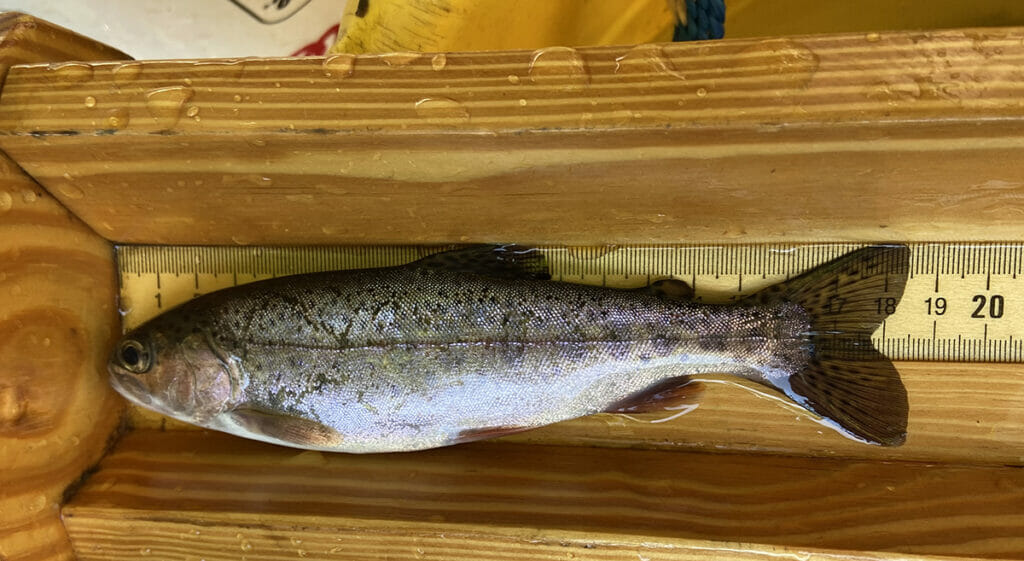
To his credit, Palmer was not as pessimistic as I was and kept at it. Because there is limited natural trout reproduction in the lower section, he experimented with stocking slightly larger browns in hopes the survival would be better. And last year, when a hatchery had an overabundance of fingerling rainbows, he stocked 60,000 of them in the stretch.
The efforts, as well as more favorable weather and rain conditions the past few years, seem to be having a positive impact.
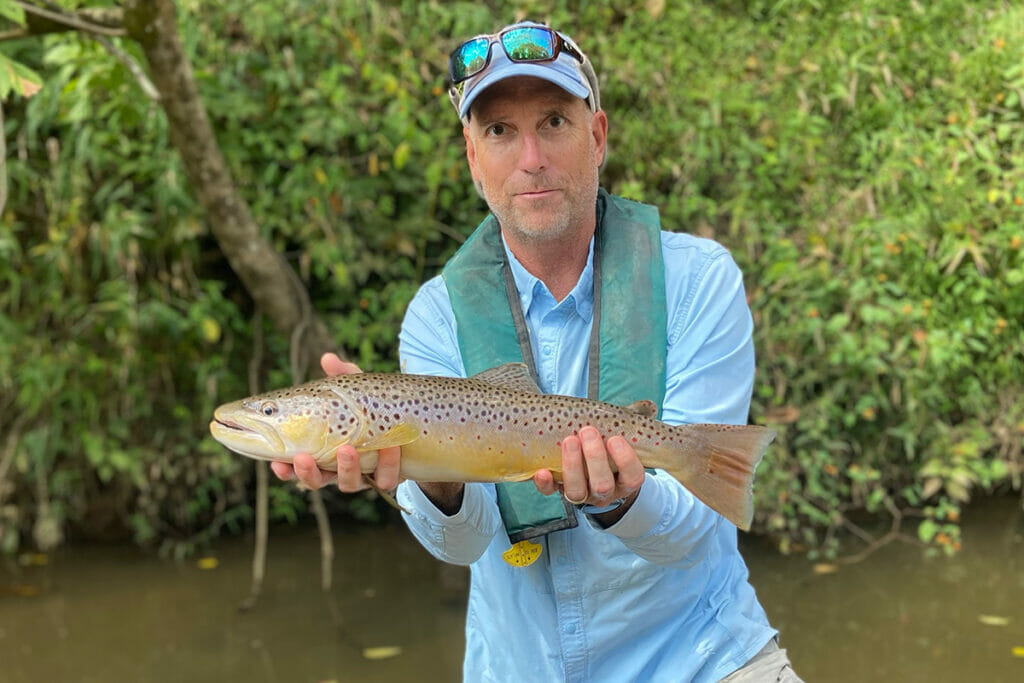
We found trout where trout should be, and lots of suckers, chubs, minnows and other forage fish throughout the stretch. Most of the trout were browns, but we also netted a handful of those recently stocked rainbows. Palmer was giddy with the growth shown by the ‘bows, which were chubby and all at least 7 inches long.
The browns were a mix of wild fish and holdovers from stocking. A few topped 20 inches and many were in the 15-17-inch range. The numbers weren’t staggering, but there were enough fish that I have moved that part of the river back into the “worth fishing” category for the time being.
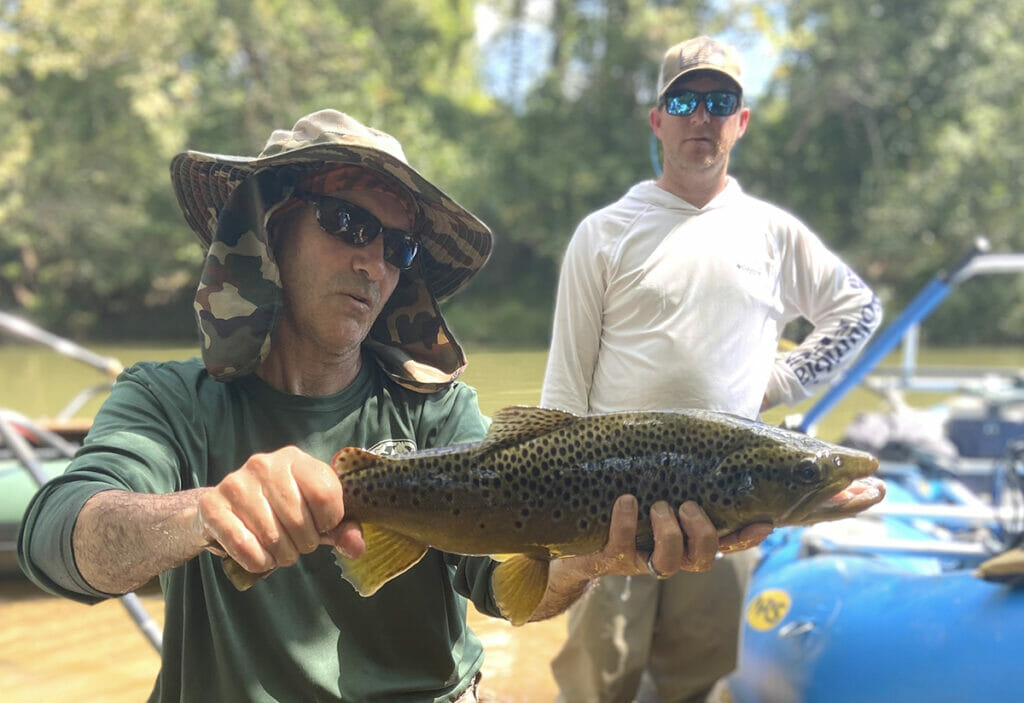
We were off the river by mid-afternoon, tired but encouraged. It’s always heartening to see a fishery rebounding versus the alternative.
I got home that evening to discover that fellow volunteer Al Kittredge, a former Smith River chapter president and a longtime volunteer leader, had a left a couple things in my truck after the shuttle. So, I guess I’ll have to make a trip back to the river one of these days to meet Al and return his stuff.
I’m not upset. I’ll take my gear and do some fishing. I doubt I’ll connect with one of those trophies. It just doesn’t happen. But it’s nice knowing a few are there.
